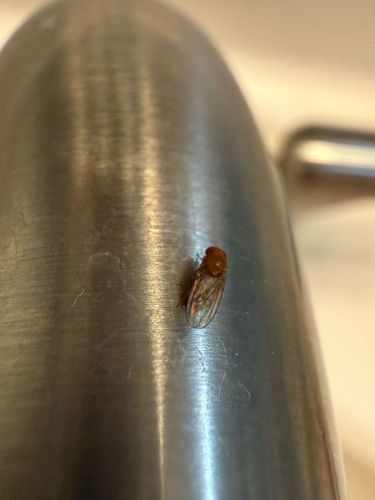Leafhopper (likely a species of Leafhopper)
Scientific Name: Cicadellidae (family, specific species cannot be determined from image)
Order & Family: Order: Hemiptera, Family: Cicadellidae
Size: Typically small, ranging from 2 mm to 15 mm in length, depending on the species.

Natural Habitat
Widely diverse, found in various terrestrial environments, including gardens, agricultural fields, forests, and grasslands. They live on plants, feeding on sap.
Diet & Feeding
Herbivorous; they feed on plant sap by piercing the plant tissue with their stylets (mouthparts). Different species specialize on different host plants.
Behavior Patterns
Known for their ability to jump quickly when disturbed. Many species are active during the day. Nymphs and adults feed on plants. Some species are migratory. They often exhibit a characteristic 'scuttling' or sidestepping movement.
Risks & Benefits
Potential risks include being vectors for plant diseases (e.g., viruses, phytoplasmas), causing damage to crops and ornamental plants through feeding, and producing honeydew which can lead to sooty mold. Benefits are fewer from a human perspective, but they are part of the food chain for various predators and parasites, contributing to ecosystem balance.
Identified on: 9/12/2025